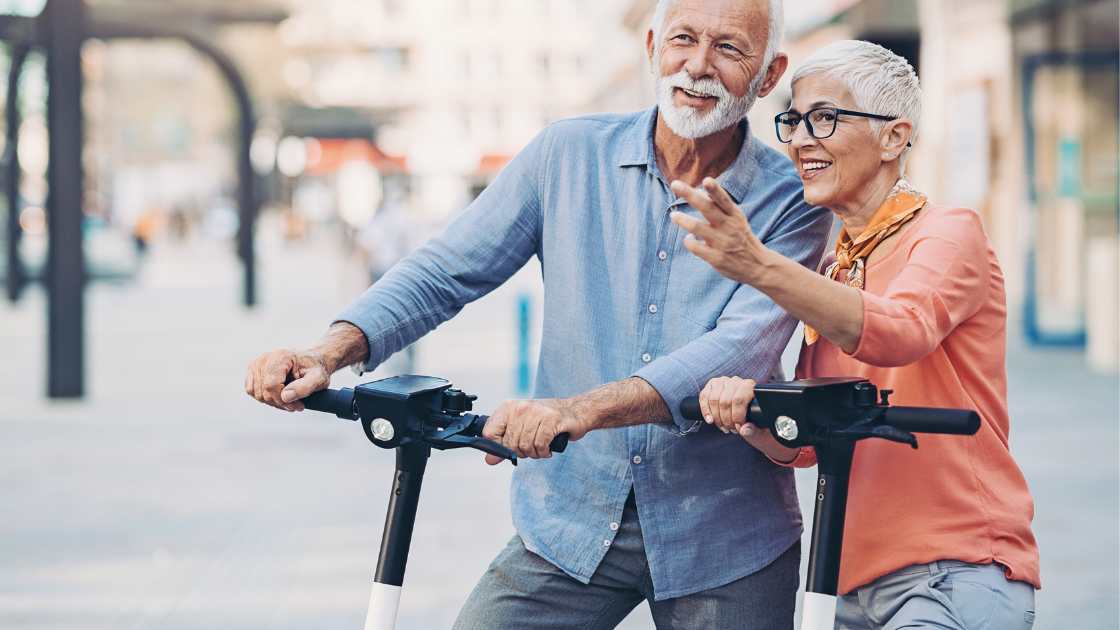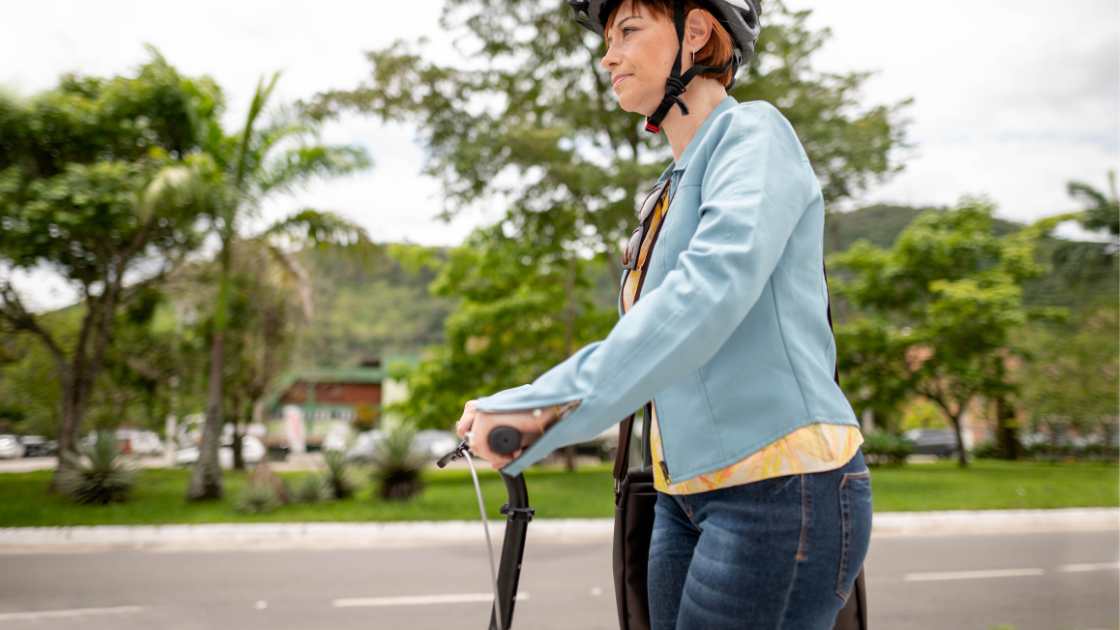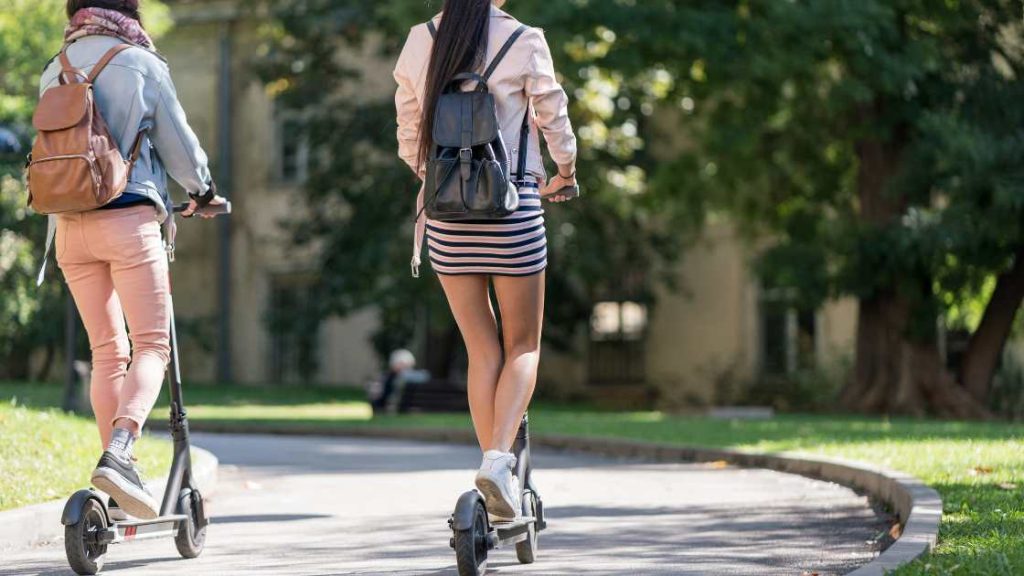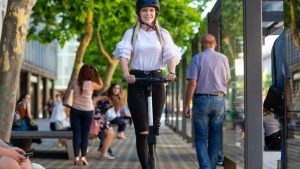Do You Know “How Escooters Affect Public Transportation?” We will describe it in this content.
E-scooters offer an eco-friendly alternative to traditional public transportation. They alleviate congestion and bridge the last-mile connectivity gap.
E-scooters have emerged as a dynamic player in urban mobility. Their introduction has revolutionized the way city dwellers navigate short distances.
These compact, electric-powered scooters complement existing public transit systems by providing a quick solution for shorter commutes, often termed as the “last mile” problem.
Cities adopting e-scooters are seeing a shift in the public transport landscape, as these vehicles offer a cost-effective and flexible mode of travel. They are accessible through apps, making them a convenient choice for tech-savvy commuters.
The integration of e-scooters into urban transportation systems is reshaping travel habits, potentially reducing the reliance on cars for short trips and improving overall efficiency.
As the use of e-scooters grows, understanding their impact on public transportation networks becomes essential for future urban planning.
Table of Contents
ToggleThe Rise Of Escooters In Urban Transport
Escooters zoom through city streets and mark a new era in urban travel. They offer a mix of convenience, speed, and eco-friendliness. Let’s dive into how escooters shape the way we move in bustling cities.
Proliferation Of Shared Escooter Services
- Easier commutes as escooters connect with public transport hubs.
- Apps show nearby scooters, making it a breeze to find a ride.
- Users roam freely without the hassle of buying and storing.
- Ride without owning; pay per trip with no maintenance woes.
Advancements In Escooter Technology
| Feature | Benefit |
|---|---|
| Longer battery life | Rides get longer with fewer stops to charge. |
| Robust builds | Scooters last longer and sustain more rides. |
| Smart safety | Features like lights and brakes keep riders safe. |
| Eco-friendly options | They cut carbon footprints for cleaner air. |
Escooters Versus Traditional Public Transport
The rise of eScooters shakes up the transportation sector. Cities see new dynamics in how people travel. eScooters offer an alternative to buses and trains. Let’s dive into how these modern rides stack up against traditional public transport.

Comparing Cost And Convenience
eScooters stand out for their simplicity. They are cost-effective for short distances. Forget waiting times and fixed routes – hop on an eScooter with ease. Below is a comparison table:
| Transport Mode | Cost | Convenience |
|---|---|---|
| eScooters | Pay-per-minute | On-demand, no schedule |
| Buses/Trains | Tickets/Fares | Scheduled, certain routes |
In cities with eScooter programs, people often choose these for “last-mile” travel. This means the short trip from a transit stop to your final destination.
Accessibility For Diverse User Groups
- Traditional public transport: caters to many, including those with mobility issues.
- eScooters: require balance and coordination, limiting some user groups.
Station accessibility is crucial. Trains and buses have designed stations for ease of use. eScooters might be harder to access for some, but they open doors for many seeking quick transport options.
Environmental Impact
The shift towards eco-friendly transport is a hot topic. Escooters stand out as a green alternative. They promise cleaner city landscapes. They reduce traffic jams. Plus, they offer a fresh take on urban travel. But, do they really help the planet? Let’s dive into their environmental footprint.
Escooter Carbon Footprint
Assessing the carbon footprint is key to understanding escooters‘ eco-credentials. They run on electricity, not fuel. This means no direct exhaust emissions. They are lightweight and efficient. But, we need to consider the total life cycle from manufacturing to disposal.
- Manufacturing: Uses metals and plastics, which need energy to produce.
- Charging: Where does the electricity come from? Green sources like wind or solar are best.
- End-of-life: Recycling escooter parts is essential to minimize waste.
Overall, escooters can reduce urban carbon emissions. But, the power source for charging is crucial.
Sustainability In Urban Mobility
Green travel isn’t just a fad. It’s a necessity. Escooters play a vital role in sustainable urban landscapes. They take up less space. They make less noise. Plus, they can be integrated with public transport for a seamless commute.
| Aspect | Benefit |
|---|---|
| Space Efficiency | More room for parks and pedestrians |
| Noise Reduction | Quieter streets for happier cities |
| Integration | Easy to combine with buses and trains |
With proper infrastructure, escooters help create a balanced travel ecosystem. They cut down reliance on cars. This leads to fewer greenhouse gases.
Sustainable mobility is about options that take care of our future. Escooters are more than just fun. They are part of a bigger movement for cleaner cities.
Shifting Rider Habits

Public transportation is changing fast. More people are now riding escooters. This change is called ‘Shifting Rider Habits’. Escooters are small electric scooters. People use them for short trips in cities. Let’s see how these cool scooters change the way we travel.
From Buses And Trains To Escooters
Escooters are becoming popular. They are easy to use. You can find them everywhere. People are choosing escooters over buses and trains. These scooters are good for our planet. They don’t use gas.
- Quick to start and stop
- No waiting for a bus
- Good for short trips
Many people use escooters to go to work or to shop. They can skip traffic this way. Escooters are fun too. This is how habits are changing.
Impact On Traffic Patterns And Peak Hours
Rush hour is a busy time. Buses and trains get full. But because of escooters, rush hour is changing. Escooters don’t get stuck in traffic. They can go on bike lanes.
| Transport | Before Escooters | After Escooters |
|---|---|---|
| Buses | Very busy | Less crowded |
| Trains | Full during rush hour | More space available |
| Cars | Stuck in traffic | Some relief |
More people use escooters during peak hours now. This eases bus and train load. It also helps with less traffic. Cities are becoming smarter. They work better. All thanks to escooters.
City Infrastructure Adaptations
Escooters zoom through our urban landscapes, changing the way urban dwellers commute. City planners now face the task to adapt infrastructure. This ensures a smooth coexistence with cars, buses, and pedestrians.
Integration With Existing Transport Hubs
To maximize efficiency, cities are weaving escooters into the current transportation fabric. This creates a seamless travel experience for users. Strategic parking zones near buses and trains encourage use. Well-marked signages provide easy navigation.
Using real-time data, cities are optimizing connections between escooters and public transport.
- Designated parking spots reduce clutter
- Real-time apps for easy route planning
- Escooter rentals at major transit points
Creating Safe Paths For Escooters
Cities are constructing dedicated escooter lanes to improve safety. They’re also updating traffic laws to protect all road users. Clear markings differentiate lanes. Signs indicate speed limits. This prevents accidents.
| Infrastructure | Action |
|---|---|
| Paths | Create separate lanes for escooters |
| Signs | Install visibility boosting measures |
| Roads | Implement escooter-friendly laws |
Regulatory Responses
As e-scooters gain popularity, cities scramble to adapt. The streets buzz with electric motors zipping past traffic. Riders enjoy the breeze and the ease. Yet, not everyone’s thrilled. Too free-spirited, some say. Hence, the officials roll up their sleeves.
Their mission: smooth coexistence. The public’s safety and city order hang in the balance. Let’s delve into the regulatory measures shaping this urban escapade.
Safety Regulations And Helmet Use

Safety comes first in the bustling world of e-scooters. As riders weave through the streets, new rules emerge. The goal is clear: prevent accidents and keep sidewalks clear. Reports of collisions spark action. Authorities now demand safer rides. Suddenly, helmet use isn’t just wise; it’s law.
- Mandatory helmets for young riders
- Age restrictions tightened
- Speed limits enforced
- Penalties for reckless riding established
Mandates vary. Some cities have helmet requirements for all. Others focus on riders under a certain age. Either way, heads stay protected.
Zoning And Parking Restrictions For Escooters
Cities crave order among the convenience. E-scooters scattered willy-nilly, a no-go. Residents trip, traffic snarls, chaos ensues. Thus, zoning and parking rules spring up.
| Parking Zones | No-Ride Zones |
|---|---|
| Designated areas for dockless vehicles | Areas where e-scooters are prohibited |
| Penalties for incorrect parking | Geofencing technology in use |
E-scooter companies collaborate with officials. Together, they designate e-scooter havens. These ensure walks stay clear and scooters remain ready for use.
Signs pop up, guiding riders to appropriate spots. Apps update with maps, highlighting where to ride and park. Cities breathe a sigh of relief. Order returns. Balance, restored.
Challenges And Controversies
Electric scooters, or e-scooters, are reshaping urban transport. They offer a quick way to navigate congested streets. Yet, they also bring challenges and controversies that cities and citizens must address.
Vandalism And Maintenance Issues
Maintaining e-scooters is not easy. Vandalism and misuse can lead to frequent repairs. Costly maintenance can impact rental companies and city budgets. Continuous upkeep is needed to keep them safe and functional.
- Broken parts need rapid replacement.
- Battery issues demand daily charging.
- Vandalism requires regular surveillance.
Public Perception And Backlash
Acceptance of e-scooters is mixed. Some see them as eco-friendly transport options. Others view them as nuisances. Cluttered sidewalks and recklessness create negative images.
| Public Concerns | Effects on Opinion |
|---|---|
| E-Scooter Clutter | Unhappy Pedestrians |
| Rider Behavior | Safety Worries |
City officials and companies must work to improve integration of e-scooters with existing transport and the urban landscape.
Potential For Reduced Traffic Congestion
City streets often feel like an endless sea of cars. The promise of open lanes with free-flowing traffic seems like a distant dream. Yet, the rise of escooters offers a glimpse of hope. These nimble vehicles provide an alternative way to travel, potentially easing the daily traffic jams that plague our urban centers.
Escooters As A First And Last Mile Solution

Escooters bridge the gap between home and transit hubs. They act as a quick hop to the station or the final leg home. This convenience encourages more people to choose public transport over cars.
- Easy Access: Riders avoid the hunt for parking near transit stops.
- Improved Connections: Efficient transfer from train or bus to escooter.
The Role Of Escooters In Decongesting Cities
Escooters play a critical role in urban traffic flow. They shift trips away from cars, reducing the number of vehicles on the road. This change can lead to smoother traffic conditions.
| Benefit | Impact |
|---|---|
| Less Space Required | More room on streets for buses and bikes. |
| Short Trips Rerouted | Fewer cars for quick errands. |
The Future Intersection Of Escooters And Public Transit
In cities around the world, the buzz of electric scooters (escooters) has become a common sound. These agile, eco-friendly vehicles are transforming urban transportation. They bridge the gap between the first mile and last mile that public transit sometimes can’t fill.
As we zoom into the future, let’s explore how escooters could intricately weave into the fabric of city travel.
Collaborations Between Escooter Companies And City Planners
Partnerships are key in shaping the future of urban mobility. Here’s what’s unfolding:
- Shared Data: Escooter companies share usage patterns with cities. This helps plan better transit routes.
- Integrated Services: Imagine using one app to plan your journey with escooters and buses. Convenient, isn’t it?
- Joint Initiatives: Escooter parking might pop up near bus stops. This makes switching modes smoother.
Such collaboration creates a seamless travel experience. It benefits everyone: commuters, the city, and the environment.
Predictions For Long-term Urban Transport Landscapes
Looking ahead, here’s how escooters could shape our travel:
| Year | Change Expected |
|---|---|
| 2025 | Escooters become a staple in public transport options. |
| 2030 | Cities design roads with escooter lanes for safer travel. |
| 2040 | Public transit systems integrate fully with personal escooters. |
With tech advancements, we’ll likely see escooters equipped with AI for smarter navigation. They might even charge wirelessly at stops!
Frequently Asked Questions Of How escooters affect Public Transportation
Are Electric Scooters Good For Transportation?
Electric scooters offer efficient, eco-friendly transport for short distances. They’re cost-effective, bypass traffic, and have minimal maintenance needs. Ideal for urban commuting, they contribute to reduced carbon emissions.
What Effect Does Electric Scooter Have?
Electric scooters offer an eco-friendly travel option, reducing carbon emissions. They provide a convenient, cost-effective mode of transport for short distances, likely alleviating urban traffic congestion. However, safety concerns and potential sidewalk clutter are notable effects.
What Are The Negatives Of Escooters?
E-scooters can suffer from limited battery life and range issues. Their durability often doesn’t match traditional bicycles, and they can pose safety risks for riders. Poor infrastructure integration leads to sidewalk clutter, causing accessibility problems in urban areas. Repair costs can also be high.
What Are The Threats Of Electric Scooters?
Electric scooter threats include increased accident risks, potential for pedestrian collisions, and injuries from falls or malfunctions. They can also contribute to clutter on sidewalks, creating tripping hazards and obstructing paths. Battery issues might lead to fire dangers.
Conclusion
E-scooters revolutionize urban commutes with efficiency and flexibility. They bridge the last-mile gap, enhancing public transport usage and reducing congestion. Adopting this eco-friendly mode could reshape city travel.
As policymakers balance regulations, e-scooters stand poised to complement, not compete with, traditional transit systems.
Receive the change for smarter, cleaner cities.




